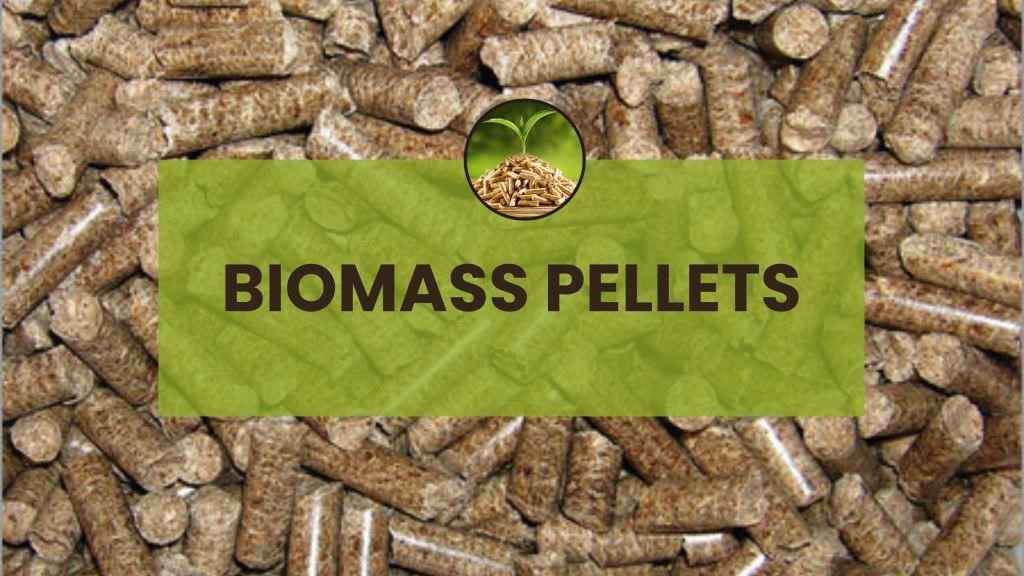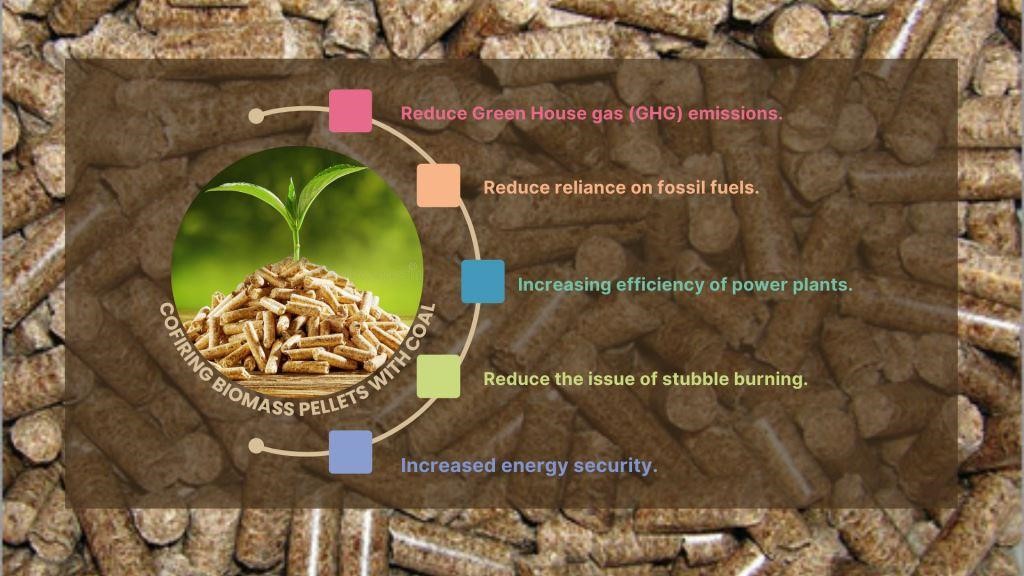17 Mar 2023 BIOMASS PELLETS
BIOMASS PELLETS
This article covers “Daily Current Affairs” and the topic details Biomass Pellets. The topic is relevant for UPSC as we are moving forward with a focus on biodegradable and sustainable energy options. The topic is related to the environment section in GS-3 and has relevance for UPSC.
For Prelims:
- What are Biomass Pellets?
- What is Biomass Energy?
- Other energy sources related to Biomass energy.
For Mains:
GS 3: Environment Significance of Biomass Energy Issues with Biomass Energy Technologies associated with Biomass Energy.
Why are Biomass pellets in the news?
Recently, experiments were carried out by NTPC-NETRA in the NTPC Dadri coal-based thermal power plant to ascertain the impact of co-firing biomass on the Thermal Power Plants (TPPs).
What is the result of these experiments?
Research has shown that cofiring 5% to 10% of biomass with coal in thermal power plants is a safe and effective method that does not adversely affect power plant operations. Co Firing biomass has helped in decreasing the reliance of thermal power plants on coal.
So far around 97,000 metric tonnes of agro-residue-based biomass has been co-fired in coal-based thermal power plants, leading to a reduction of more than 1.2 Lakh Metric Tonnes (LMT) of carbon dioxide emissions.
What are Biomass Pellets?
Biomass refers to any organic material that is derived from living or dead organisms. It can include wood, crops, agricultural residues, animal waste, and other organic matter. When the above-mentioned biomass or organic materials are compressed into small pellets they can serve as a source of energy.
Thus, biomass pellets are a type of fuel derived from organic materials such as wood, agricultural crops, and forestry residues.

Biomass Pellets
What is co-firing of biomass pellets with coal in thermal power plants?
Cofiring or co-combustion is the burning of two materials together. The ‘co-firing biomass with coal experiment’ conducted by NTPC involved the burning of biomass pellets with coal in order to generate electricity.
The objective behind burning biomass pellets with coal was:
- Reduce greenhouse gas (GHG) emissions: The combustion of coal releases vast amounts of greenhouse gases like carbon-di-oxide, carbon monoxide, sulfur-di-oxide, etc. These gases have a prime role in increasing temperatures globally. Biomass pellets are a carbon-neutral energy source, meaning that the carbon dioxide released during combustion is offset by the carbon dioxide absorbed during plant growth.
- Reduce reliance on fossil fuels and increase the use of renewable energy: By co-firing biomass pellets with coal, power plants can reduce their reliance on fossil fuels and decrease their carbon footprint. The practice is in line with achieving the ‘net zero’ commitment of India by 2070.
- Increasing efficiency of power plants: The co-firing of biomass pellets with coal can help in improving the efficiency of power plants. Biomass has a higher volatile content than coal, which can improve combustion efficiency and reduce emissions.
- Reduce the issue of stubble burning: The farmers burn their fields post-harvesting to clear them for the next crop. This raises the pollution levels in nearby areas. For example, the paddy residue burnt by farmers in Punjab and Haryana created high PM levels in NCR. Thus, converting the residue into biomass can help resolve the issue of stubble burning.
- Increased energy security: The use of biomass can help to diversify the energy mix and reduce dependence on imported fossil fuels, which can improve energy security and reduce the risk of price volatility.
- Job creation: The production and use of biomass can create jobs in rural areas, where biomass resources (crop residues, animal excreta, etc) are abundant. This can augment local economies and reduce dependence on foreign energy sources.

Biomass Pellets with coal
What are government efforts in this direction?
- National Mission on the use of Biomass in Thermal Power Plants (SAMARTH)
- Revised biomass policy: It mandates all thermal power plants in the country to use 5% of biomass pellets in the co-firing with coal.
- GEM portal: GeM portal has a facility for Biomass pellet procurement.
- Priority Sector lending by the RBI: This makes easy loan availability to set up biomass energy plants.
- MNRE Scheme “Biomass Programme”: It provides assistance to set up the biomass pellet plant.
What are the issues with co-firing biomass with coal?
- Regular availability: Biomass is not always readily available in the quantities required for co-firing with coal. This can be a particular issue for large-scale power plants that require a steady supply of feedstock.
- Infrastructural constraints: The infrastructure required to turn the process into reality is not robust enough. There are issues of procurement, storage, transportation, etc.
- Nature of biomass: Biomass pellets can be susceptible to moisture and can break down more easily during transportation and storage.
- Other emissions: While biomass combustion is considered carbon-neutral, there can still be emissions of other air pollutants, such as particulate matter, nitrogen oxides, and sulfur dioxide.
- Combustion efficiency: Biomass has a lower heating value than coal, which can impact the overall efficiency of the power plant.
- Cost: While biomass can be less expensive than coal, there can still be significant costs associated with sourcing, transporting, and processing biomass feedstocks.
Way forward
The use of biomass pellets as a co-firing material with coal in thermal power plants has the potential to play an important role in reducing greenhouse gas emissions and increasing energy security. Here are some potential ways forward for biomass pellets:
- Development of sustainable biomass supply chains: It is essential to ensure that the biomass used to produce pellets is sustainably sourced and does not contribute to deforestation or other environmental problems.
- Advancements in pellet production technologies: Continued advancements in pellet production technologies can help to increase the efficiency of biomass pellet production and reduce costs. For example, using advanced drying techniques, improving pelletizing equipment, and developing more efficient pellet transportation methods can all help to make biomass pellets more cost-effective.
- Integration with other renewable energy sources: Integrating biomass pellets with other renewable energy sources, such as wind and solar power, can help to provide a more stable and reliable energy supply. This can be achieved through the use of hybrid power plants, where different renewable energy sources are used in combination.
- Development of Cooperatives: The farmers can develop cooperatives on the line of FPOs to achieve economies of scale in the collection, transportation, and use of biomass pellets. Being a cheap item only vast-scale collective efforts can bring revenue.
Source:
Get Daily Current Affairs From Yojna IAS


No Comments